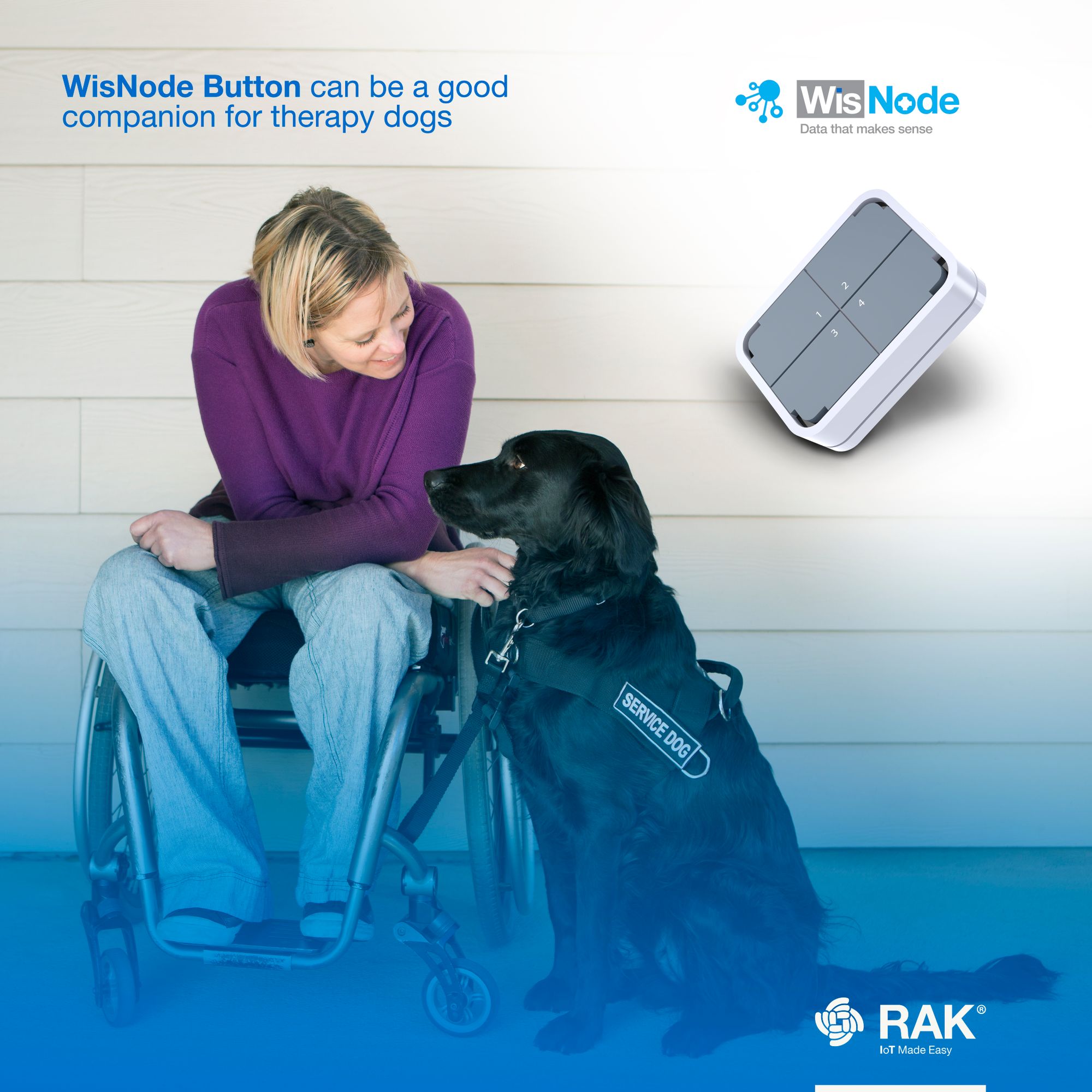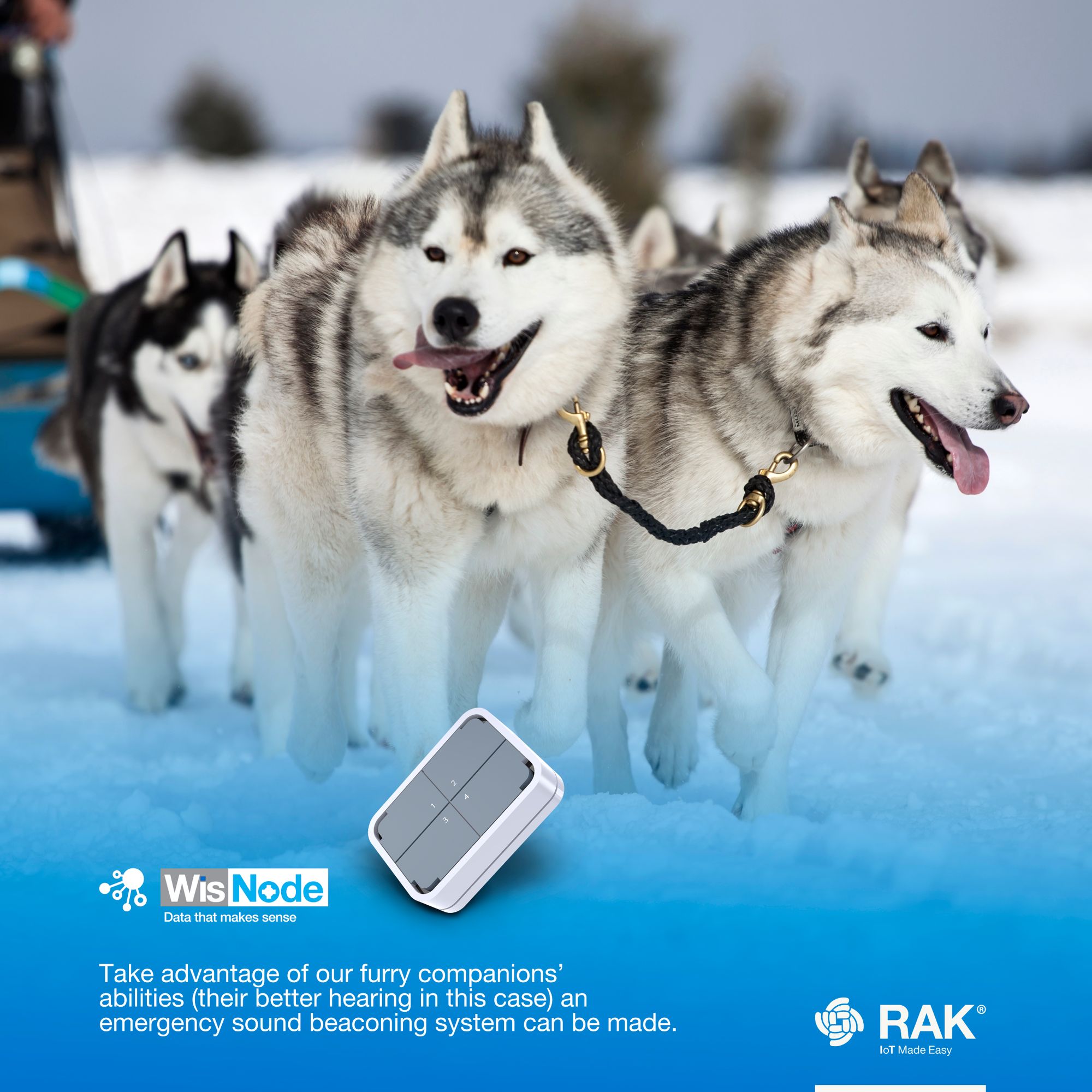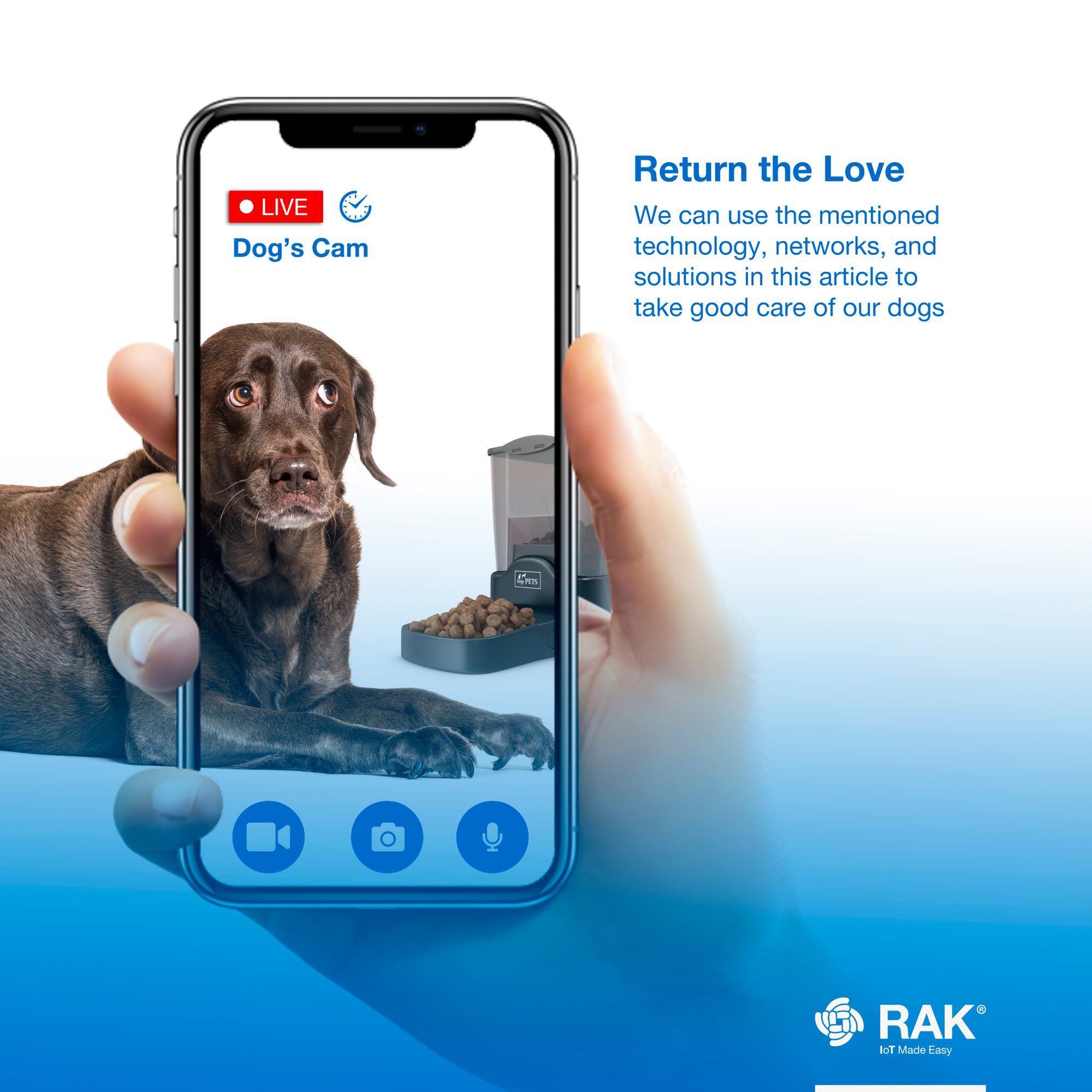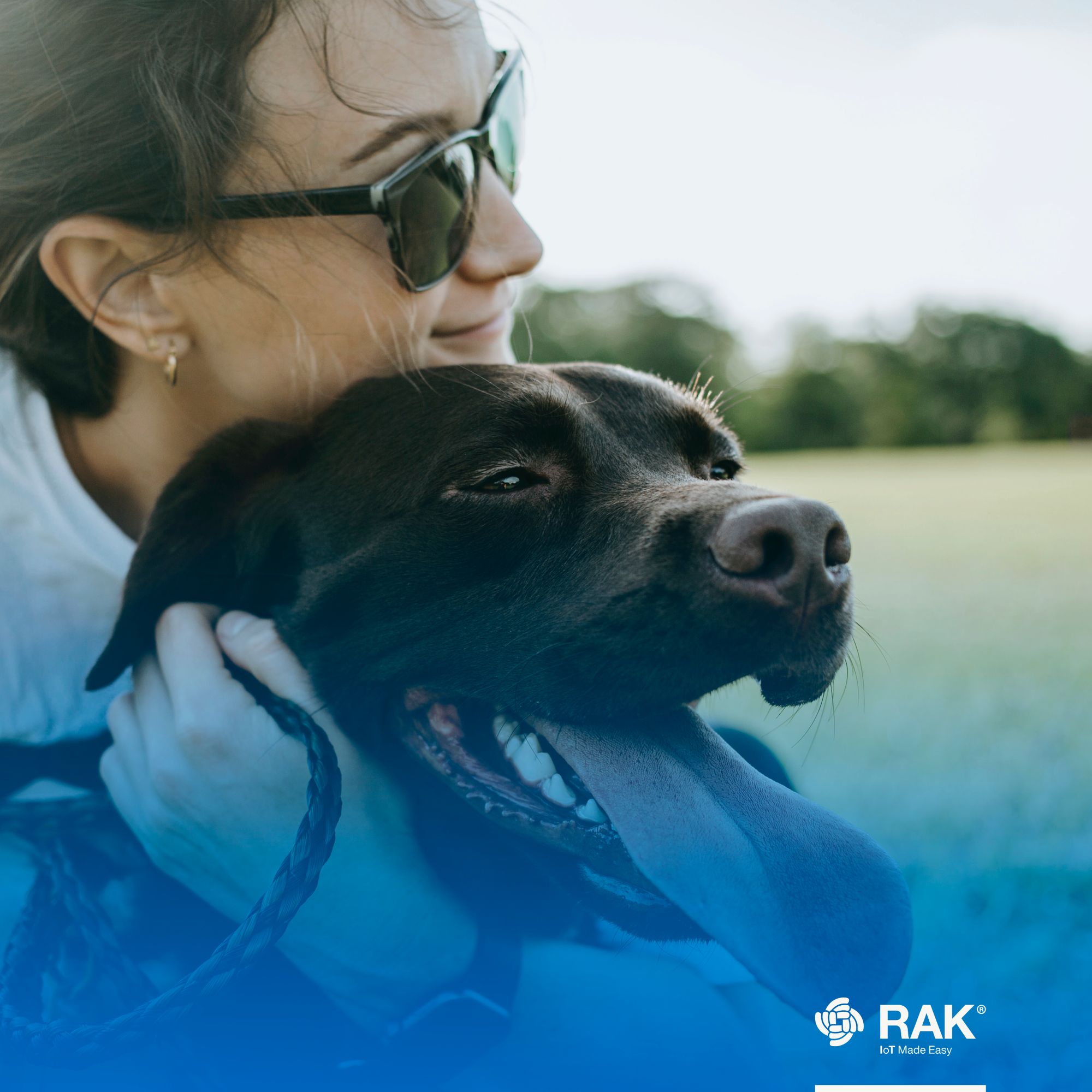IoT: Making Dogs More Than Just Man’s Best Friend
Humans are social beings, we need our close circle of family and friends. But it is not always possible to have someone around us, especially in strange times like now, with the Covid-19 situation, where social distancing is key. What is the next best thing? A pet of course! And according to a survey conducted by Growth from Knowledge (GfK), globally 57% of the people own some kind of a pet, and the top pick (for 33% of those people) is a dog (sorry cats, only 23% of humanity likes you).
There is a reason for that. Dogs are not only loveable and cute but social like us, and highly empathetic. It makes them the perfect companion in all sorts of activities that we are going to discuss below. It is almost like the sole purpose of a dog’s life is to make our own more bearable.
On the other hand, we strive to do the same ourselves. How? With technology and progress of course! And it is evident that with the growth of “everyday technology” the comfort level of the average human is increasing. Internet of Things (IoT) is steadily becoming the face of that “everyday technology”. It is not to be said that IoT can be used for just small, local, and personal solutions, however, it makes those kinds of solutions a lot easier with its rapid growth of popularity and relatively easy deployment scenarios. IoT devices are made as user-friendly as possible and that alone is enough to make them the go-to choice for individuals, small businesses, and large corporations alike.
Humans and dogs – partners in the act of living
We like to keep our pets close as we need that closeness, but sometimes unforeseen situations occur and separate us. I’m not talking about the scenario where you just can’t be with your pet 24/7. Dogs get lost, run away, or even get kidnaped and that can be a great blow for the owner. Chipping your dog is not yet so popular, it has limitations, and it can be pricy, not to mention painful for the pup.
In a Smart City, such a problem can be eradicated! Imagine a town with LoRaWAN coverage everywhere. Let’s say there are a bunch of, for example, WisGate Edge gateways placed strategically. IoT solutions will shortly become something mundane.
In a Smart City, the missing dog situation will have an easy solution. A simple GPS tracker device like WisNode Track Lite or one of those GPS dog collars and some developer enthusiast will be enough. And be absolutely sure that if the environment is right (in this case the presence of a citywide LoRaWAN network) enthusiasts will appear. The right environment will stimulate growth and that is true even for technology.
The fact that the closeness of a dog reduces anxiety in humans, and that dogs are quite smart, and can be trained to do a lot, is the reason why therapy dogs exist. Those are dogs that are trained to provide support, affection, and comfort to people, often in institutional settings like hospitals, schools, libraries, retirement homes, and so on. They are supposed to interact with all kinds of people, not just their owner or handler.
Therapy dogs classify into 3 types. Therapeutic visitation dogs are usually household pets that their owner brings to hospitals, rehabilitation facilities, and such so the dog can improve the mental health of patients through socialization and encouragement. The second type is the facility therapy dog. They “work” in those institutions along with their handlers and they usually live there as well helping patients with Alzheimer's disease and other cognitive and mental illnesses. The third type is animal-assisted therapy dogs. Their duty is to assist patients to reach certain goals towards their recovery such as gaining motor skills, use of limbs, and hand-eye coordination. The dogs do this by walking patients through certain activities and games to help them practice these skills.
In this line of thought, don’t forget the comforting dogs! They are not yet popular but they exist. The idea is that the pet is your personal animal-assisted therapy dog. It also must pass training, not every pet is qualified for the title. The dog’s ability to sense changes in our mood, behavior, and even chemical changes in our body (like high blood sugar) make them the perfect companion for people with special needs. The development of the community is striving to improve the situation and help those people. And naturally, technologies can be involved to improve the connection between the comforting dog and its owner. IoT is the ideal foundation for that with its rapid development and growth. In the utopian Smart City, just a simple button like WisNode Button can make difference. If the person is in danger, let's say in case of a panic attack or diabetic shock, the dog can sense the early signs and give him a heads up. Then he only needs to push the button (for example programmed to notify a family member or a doctor) and the help will be on the way. People living alone with different conditions like dementia, depression, diabetes, and so on can be a little less scared because of that. Technologies and dogs are looking after them!
And probably one of the most hardworking dogs that are involved in direct almost medical help to people is the assistance dogs (also commonly known as service dogs). That includes guide, hearing, mobility assistance, medical response, psychiatric service, and autism assistance dogs. All trained to tackle the everyday struggles of disabled people, aiding and assisting them.

All those dogs need special training. The standards are pretty high, so naturally, the training is intense and complex. And as with everything, technology can make that process easier too. As we will see later, some tech companies are starting to focus their products on pets, making IoT solutions for mundane pet-related tasks. It is safe to assume that it won’t be so long before this becomes true for special training purposes. The key is in the modular approach that WisBlock and similar products are integrating into the IoT solutions of the future.
Dogs do not give us just moral support but physical as well. In the past (today as well, just more for entertainment, not survival), dog power has been used for hunting and travel. The practice of using dogs to pull sleds dates to at least 2000 BC. It originated in Siberia or North America, where many Native American cultures used dogs to pull loads across the icy plains. Gradually, the sled pulling transformed into a sports game called mushing.
At first glance, mushing is what it is and improvements are not needed. This is true for the sport itself. But it is a dangerous sport and as such, the safety aspect can always be improved. The dogs pull the sled on a specific road. What happens when the sled gets off the way? It could mean that there is a problem with the musher - he got lost or hurt. And usually, those races are held in remote areas where often there is no cellphone coverage. A problem, for the racer and the rescue team. But when you add IoT technology to the picture, the solution will pop up immediately. To deploy a few outdoor gateways around the track and have the participants in the race carry a tracker is not something hard to do. It is even cheaper not only because the hardware is not that expensive but because the deployment and maintenance costs are considerably lower as well. To take things further and take advantage of our furry companions’ abilities (their better hearing in this case) an emergency sound beaconing system can be made.
Let me explain the idea. In the scenario of a mushing competition where, for the safety of the competitors, a LoRaWAN gateway network (let’s say a few RAK7249 WisGate Edge MAX, placed strategically around the course) is deployed and is providing coverage, to have the humans or the dogs carry a tracking device (like the beforementioned RAK7200 WisNode Track Lite) may not be enough in case of emergency. The tracker will transmit coordinates and the rescue team will have the location of the lost team but if the weather is bad, say a snowstorm, the musher and dogs are alone. In a case of a lost team, the human can rely on the better senses of the dogs to navigate his way to safety. At a couple of points throughout the length of the racetrack (the rest stops will be perfect for that) the mentioned sound beaconing system can be placed. How I imagine it to work is like so: At the safe place there is a sound system that will broadcast a high pitch sound (like the one made by dog whistles) that the dogs will hear and head to. The musher has in his possession a LoRaWAN based activator (like the RAK7201 WisNode Button 4K for example) that, with just pressing a button, will send a signal for the sound system to turn itself on. The combination with the GPS tracker will guarantee that only the nearest beacon is activated so the dogs will have only one sound to follow. At the same time, the rescue team can monitor the team’s movements and wait for them at the safe spot.
The development of such a system sounds tricky but with the modular IoT technology, like WisBlock, that steadily takes over, it is possible. The combinations of sensors and other addons are practically limitless making the development of custom IoT solutions the to-go approach.

And those are just a small part of examples where dogs take part in our lives. We have to mention all the good boys and girls that are the so-called “working dogs”. Alongside the assistance, therapy, and sled dogs, there are also the detection, draught, guard, guide, herding, military working, search and rescue, and service dogs. All are of immense importance and very special. And it is worth it to consider how to make their job, training, and life easier by using technology.
Return the love
As we’ve seen, dogs love us unconditionally. It is always a good idea to return that love! IoT holds the key to transforming the way we take care of our four-legged friends. We can use the abovementioned technology, networks, and solutions to do so.

Life changes and so does the way we view pet care. Let us bring it to the 21st Century. Caring for a pet will always mean taking time to do the daily chores needed, but why not make the best of the advent of smart tech and make that easier? Having a dog, or any pet for that matter requires the bare minimum of us and the busy lifestyle can prove even that to be hard. And yet we want and need those pets to be happy. Busy pet owners can give their animals more attention, better playtime, increased safety, and more with IoT technology! And the industry seems to embrace the idea as more and more gadgets targeting pets are released.
Feeding time has always been up for debate. We strive to give our pet a balanced and healthy meal and do so at a convenient time for us, while dogs will eat whatever at any time (A dirty tissue from the ground? Bring it on!). And the obvious solution, made possible with the smart tech, is an automatic feeder. There a few options out there, but the idea is the same. This is a remote feeding option, as a smart feeder lets you control your pet’s feeding from your laptop, smartphone, or tablet. A feature like automated schedules to manage feeding times, food dispensing speed, and portion size to suit your pet is a must, but the technology can give us more. Like the option to adjust feeding schedule in real-time, from anywhere, or even alerts and notifications about feeding times, meal confirmations, food inventory, and battery life. For you remains just to buy the food and load it to the feeder.
We took care of the food, now it is playtime! Nothing will beat a nice long walk in the park with your dog but that is not always possible. And dogs need the activity. What to do? There are creative people with knowledge in the IoT sphere that got you covered. Smart devices that keep you connected with your pet already exist. And they are interactive too! You won’t wonder what your dog is up to when you are away and the dog won’t feel so lonely when it has the means to see you or hear you at any time. Dog cams that enable you to watch your dog through a webcam that transmits to an app on your smartphone is becoming a common thing. The communication is ensured because such a device is usually capable of two-way communication that detects barking and notifies you, and it enables you to talk to your dog as well. The gadget can also be a snack dispenser that you can trigger at will through an app.
Read: LoRaWAN® 101: All You Need To Know
Some companies took the idea further and integrated activities in such devices as the option of a digital phone that your dog can activate with a paw push button to connect to you via an app on your smartphone. Or it can also dispense treats, emit pleasant smells to soothe your dog so it won’t feel so alone.
Even gaming consoles that work on that principle are available. Such a toy serves two purposes. The first is to occupy your dog’s attention while you are away. The other one is educational. Commands can be integrated, which your dog then responds to and gets a treat for it. It is possible with a bit more sophisticated network of sensors that hear barks or a touchpad (a paw-pad in this case, hehe) on the front of the device. If the commands are followed, a treat is dispensed to reinforce the behavior. The whole thing can be made to communicate with your home Wi-Fi and allows you to track your dog’s interaction with it. It keeps your dog busy, entertained, and out of trouble and you can be a part of the process even from afar.
Strong friendship, better life

There is no doubt that the saying “the dog is a man’s best friend” is true. But they can be so much more than that. Dogs are a part of our families and they can become our saviors in certain situations. Technology is making sure that all of this is not only possible, but easy, practical, and efficient. Life is not so bad!






